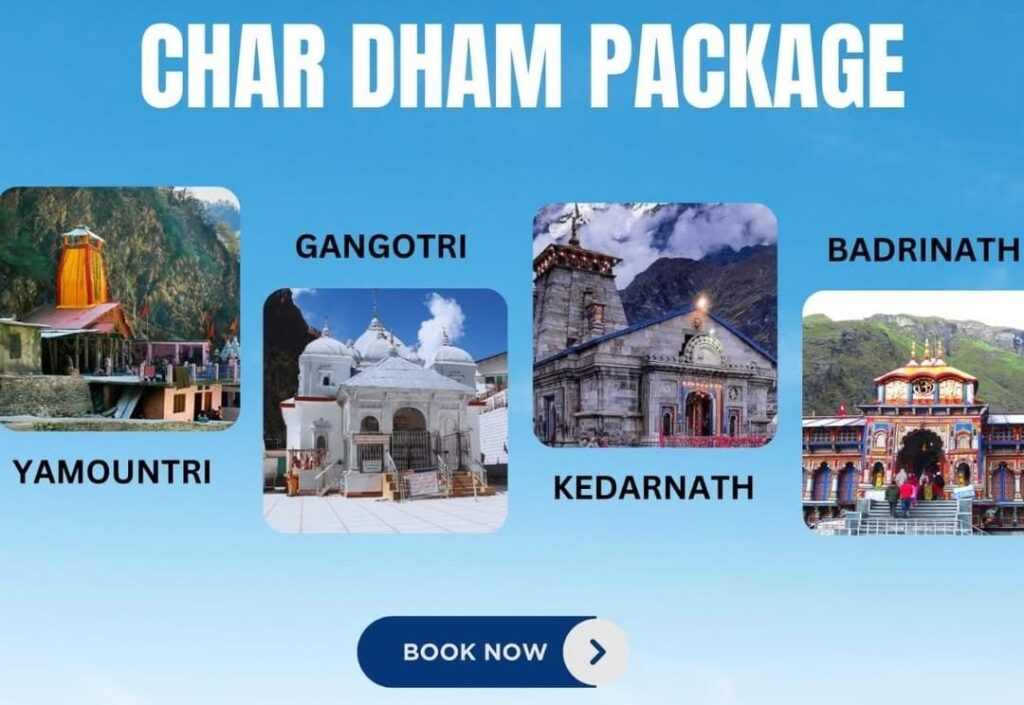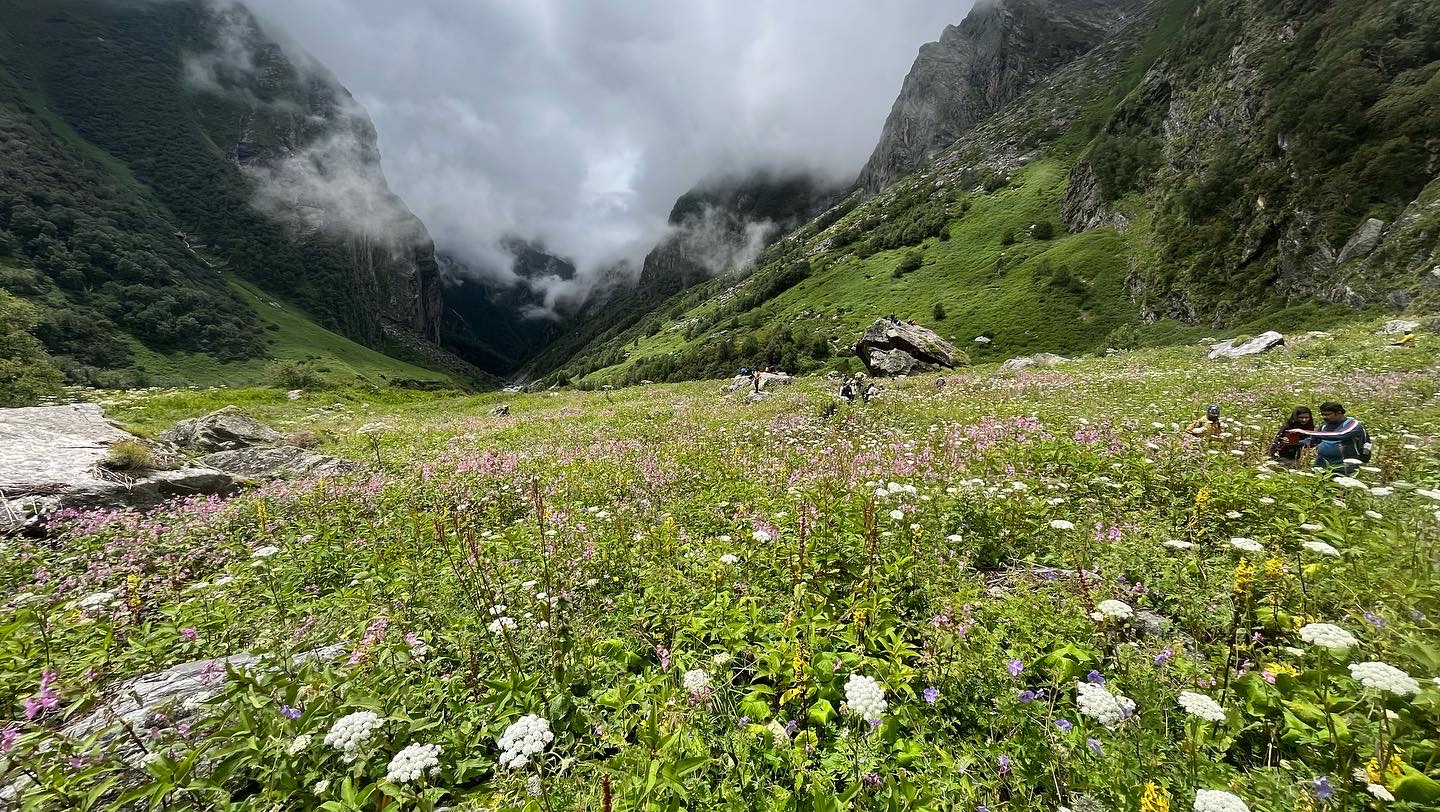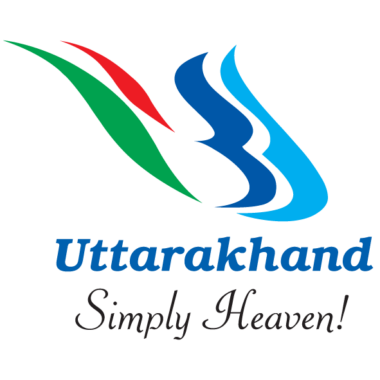Overview
The term char dham was (four adobes) was first used by a Hindu philosopher and reforms shri Adi Shankaracharya, where he defines the four famous Vaishnavite pilgrimages.
The ancient pilgrimages that were mentioned in the scriptures were Yamunotri, Gangotri, Kedarnath, and Badrinath. Each of these has its own significance and importance in Hindu mythology. In recent times, these ancient sites are identified as Chota char dham to differentiate them from the bigger circuit which includes Badrinath, Rameshwaram, Puri and Dwarka.
The basic description of the Char dhams are:-
YAMUNOTRI:-
Yamunotri is the source of the Yamuna River and the seat of the Goddess Yamuna in Hinduism in the Garhwal Himalayas in Uttarakhand, India. It is one of the four sites in Uttarakhand’s Char Dham pilgrimage. The chief attraction at Yamunotri is the temple devoted to the Goddess Yamuna and the holy thermal springs at Janki Chatti.
The temple of Yamuna, on the left bank of the Yamuna, was constructed by Maharaja Pratap Shah of Tehri Garhwal. The deity is made of black marble. The Yamuna, like the Ganges, has been elevated to the status of a divine mother for the Hindus and has been held responsible for nurturing and developing the Indian civilization.
Close to the temple are hot water springs gushing out from the mountain cavities. Surya Kund is the most important kund. Near the Surya Kund there is a shila called Divya Shila, which is worshipped before puja is offered to the deity. Devotees prepare rice and potatoes, tied in muslin cloth, to offer at the shrine by dipping them in these hot water springs. Rice so cooked is taken back home as prasadam. The pujaris of Yamunotri come from the village of Kharsali near Janki Chatti. They are the administrators of the sacred place and perform religious rites. They are well-versed in the Shastras.
GANGOTRI :-
Gangotri is a small town in Uttarkashi district in the state of Uttarakhand, India. It is a Hindu pilgrim town on the banks of the river Bhagirathi and origin of river Ganges. It is on the Greater Himalayan Range, at a height of 3,100 metres (10,200 ft). It is one of the four sites in the Chota char Dham pilgrimage circuit.
According to popular Hindu legend, it was here that Goddess Ganga descended when Lord Shiva released the mighty river from the locks of his hair.
The original Gangotri Temple was built by the Nepalese general Amar Singh Thapa.The river is called Bhagirathi at the source and acquires the name Ganga (the Ganges) from Devprayag onwards where it meets the Alaknanda. The origin of the holy river is at Gaumukh, set in the Gangotri Glacier, and is a 19 km trek from Gangotri.The temple is closed from Diwali day every year and is reopened on Akshaya Tritiya. During this time, the idol of the goddess is kept at Mukhba village, near Harsil.
KEDARNATH DHAM:-
Kedarnath mandir is a hindu temple located in the Himalayan region, near Mandakini river in Uttarakhand. It is one of the twelve (12) Jyotirlingas and also a part of Chota char dham yatra. Due to extreme weather conditions, the temple is open to the general public only between the months of April (Akshaya Tritiya) and November (Kartik Purnima, the autumn full moon). During the winters, the vigraham (deities) from Kedarnath temple are carried down to Ukhimath and where the deity is worshiped for the next six months. The shiva linga worshipped at kedarnath is triangular in shape. Maa parvati worshipped Kedareshwar for uniting with lord Shiva as ardhanarishvara.
BADRINATH DHAM:-
Badrinath temple is one of the famed shrines of Chardham Yatra dedicated to Lord Vishnu.It is Situated along with Alaknanda River on the hills of Uttarakhand state, Badrinath Dham is one of the holiest temples for the Hindus.
It is believed that, once upon time, it was Lord Shankar’s home, But looking at the glory of that place, Lord Vishnu Narayana asked for it and Lord Shankar very happily gave up his favourite place to go and reside in Kedarnath.
When the flow of two rivers meet and then flow as one this point at which they meet is called prayag. On the way to Badrinath you will get a chance to view five prayags. On the way to Badrinath, all devotees get the fortune of going around Devprayag, Rudraprayag, Nand prayag and Vishnu prayag.
The river that emerges from Gangotri Gaumukh is known as Bhagirathi, And the river that comes from Badrinath is known as Alaknanda. When Alaknanda and Bhagirathi rivers meet affectionately then they are known as Ganga.The mata murti fair that takes place in Badrinath is celebrated in the descending memory of goddess of Ganga And this is a very well known fair. Situated in north India, the chief priest of this temple who is also known as Rawal they are traditionally Nambudiri Brahimins. They are the residents of Multaha Kerala.
Itinerary
Haridwar/Rishikesh to Guptkashi (200 km | 7-8 hrs)
- Start early morning from Haridwar or Rishikesh after taking a holy dip in the Ganga.
- Drive through Devprayag, Rudraprayag, and Guptkashi, soaking in the divine vibes of the Himalayas.
- Visit Vishwanath Temple in Guptkashi. Overnight stay at a hotel or dharamshala.
Price Inclusion & Exclusion
- Accommodation for 9 nights in a good and comfortable hotel room or cozy cottage.
- All-day breakfast and dinner at hotel during the tour.
- Complete travel in a tempo traveler, or Bus.
- A guide for the duration of the tour.
- Trekking fees and necessary permits.
- Medical kit and oxygen cylinder in case of emergencies.
- Any personal expenses such as laundry, phone calls, tip, etc.
- Any extra meals or snacks not mentioned in the package.
- Any additional costs incurred due to unforeseen circumstances like natural disasters, roadblocks, etc.
- Any expenses incurred due to delay or cancellation of flights or trains.
- Travel insurance.
- Any other services not mentioned in the inclusions.
- Please note that in Kedarnath, only tents are provided as accommodation. If you would like a room, you can pay an additional ₹1000 per person on a sharing basis.
Packing List: Essential Things
- 45-60 Ltr Bag Pack With Rain Cover & Comfortable Straps
- Hot & Cold Water Bottle Like Borosil & Milton
- Energy Bar, Dry Fruits & ORS
- 1 Pairs Of Sunglasses (U/V Protected)
- 1 Neck Gaiters (Buff)
- Tiffin Box
- 2/3 Full Sleeves (Non-Cotton)
- 1 Full Fleece T-Shirt
- 1 Fleece Jacket (Woollen Or Sweater)
- 1 Down Feather/Hollofil Jacket
- 1 Waterproof Jacket/Poncho
- 1 Pair Thermal Inners (Upper And Lower)
- 2 Trek Pants (Avoid Shorts & Denim Pants)
- 1 Pair of Waterproof Gloves
- 1 Pair of Woollen Gloves
- Sun Cap
- Woollen Cap
- 4 Pairs Of Cotton Socks
- 1 Pair Of Woollen Socks
- 1 Waterproof & High Ankle Trekking Shoes
- 1 Pair Of Floaters
- Hand Sanitizer & Sunscreen Lotion
- Toothbrush And Toothpaste
- Toilet Paper And Wet Wipes
- Quick Dry Towel
- Lip Balm & Antibacterial Powder
- Moisturize
- id Aadhar crad etc
How To Reach
Haridwar is easily accessible by road from major cities like Delhi (220 km), Dehradun (55 km), and Chandigarh (205 km). Well-connected highways, frequent government and private buses, and taxis make the journey convenient, ensuring a smooth travel experience to the holy city.
The nearest airport to Haridwar is Jolly Grant Airport in Dehradun, about 35 km away. From the airport, you can reach Haridwar by taxi or bus in around 1 hour.
Haridwar is well-connected by train to major cities in India. You can take a direct train to Haridwar Junction (HW) from Delhi, Mumbai, Kolkata, Chennai, or other major stations. Popular trains include Shatabdi Express, Jan Shatabdi, and Yoga Express. Book tickets in advance for a comfortable journey.
Other Information
The best season for Char Dham Yatra is summer and post-monsoon, from May to June and September to October.
- May to June: Pleasant weather, clear skies, and accessible roads. Ideal for travel before the monsoon.
- September to October: Fresh greenery after the monsoon, fewer crowds, and stable weather.
Avoid the monsoon season (July-August) due to heavy rainfall, landslides, and roadblocks. The winter months (November-April) are extremely cold, with heavy snowfall blocking access to Kedarnath and Gangotri.
The Char Dham Yatra involves a mix of road travel and trekking, with varying difficulty levels for each destination:
- Yamunotri (Moderate-Difficult) – A 6 km trek from Janki Chatti, with steep and uneven paths. Ponies and palanquins are available.
- Gangotri (Easy) – No trekking required; the temple is accessible by road.
- Kedarnath (Difficult) – A 16 km trek from Gaurikund, with steep inclines and rough terrain. Ponies, palkis, and helicopters are available.
- Badrinath (Easy) – No trekking required; the temple is accessible by road.
Trekking difficulty depends on fitness levels, so proper preparation is recommended.
- Registration – You need to register before starting the yatra. You can do it online or at designated counters.
- Best Time to Visit – The ideal time is May–June and September–October. Avoid the monsoon season due to landslides.
- How to Travel – You can go by bus, taxi, or private vehicle. Helicopter services are available, especially for Kedarnath.
- Where to Stay – Many hotels, dharamshalas, and guesthouses are available. It’s best to book in advance during peak season.
- Food Options – Only vegetarian food is available along the route, with small dhabas and restaurants.
- Altitude Sickness – Some places like Kedarnath (3,583m) and Badrinath (3,300m) can cause breathing issues. Stay hydrated and take it slow.
- Things to Carry – Warm clothes, trekking shoes, rain gear, medicines, ID proof, and a power bank for charging your phone.
- Trekking Help – If you can’t trek, you can hire ponies, palkis, or porters at Yamunotri and Kedarnath.
- Mobile Network & ATMs – Mobile signals may be weak in some areas. Carry cash as ATMs are limited.
- Spiritual Significance – The Char Dham Yatra is one of the holiest pilgrimages in India, attracting devotees seeking spiritual blessings.
Would you like more details on helicopter bookings, itinerary, or permits?
Gallery





FAQs
Registration is mandatory and can be done online on the Uttarakhand Tourism website or at registration counters in Haridwar, Rishikesh, and other locations.
The yatra usually starts in April/May and ends in October/November. Exact dates depend on temple openings, which are announced yearly.
Yamunotri: 6 km trek from Janki Chatti.
Gangotri: No trek, directly accessible by road.
Kedarnath: 16 km trek from Gaurikund (ponies, palkis, and helicopters available).
Badrinath: No trek, directly accessible by road.
Yes, helicopter services are available for Kedarnath and Badrinath from Dehradun, Phata, and Guptkashi. Advance booking is recommended.
Network coverage is limited in some high-altitude areas. Carry enough cash as ATMs may not be available everywhere.
Yes, but consult a doctor before traveling, especially for senior citizens, children, or those with health issues. Helicopter services can be a better option for Kedarnath.
Basic medical facilities and first aid centers are available at major stops, but it’s advisable to carry personal medicines.






Leave a Comment